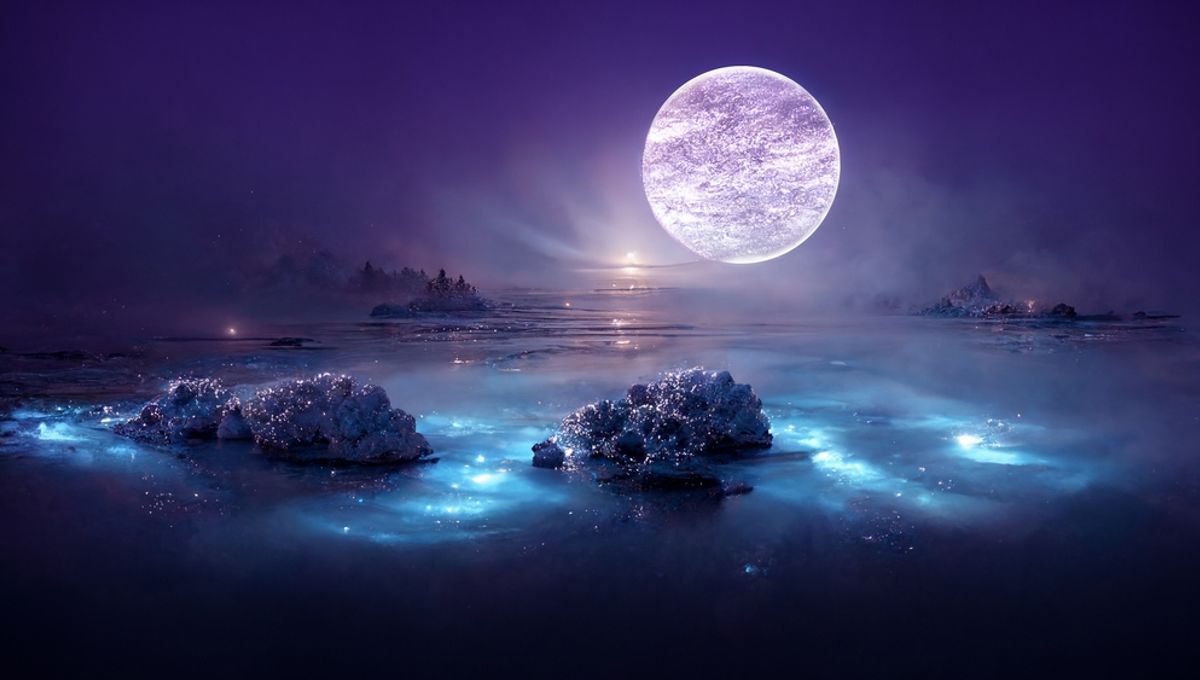
Ancient Austronesian sailors are thought to have begun conquering the world’s oceans around 6,000 years ago, eventually arriving at and populating territories from Madagascar to Easter Island. It’s still unclear how these ancient seafarers successfully navigated such huge distances, although one enigmatic phenomenon known as Te Lapa may have helped keep them on course.
Roughly translated as “the flashing” or “something that flashes”, Te Lapa is described as a blinking pulse of light that emanates from islands, yet is virtually unknown to science and completely unexplained. The strange effect was first mentioned in Western literature in the early 1970s when a book called “We, the Navigators” highlighted Indigenous navigation methods and shattered the popular idea that ancient Pacific Islanders simply drifted aimlessly and reached new lands purely by accident.
In 1993, anthropologist Dr Marianne George became one of the first Westerners to witness Te Lapa after traveling to the Solomon Islands. Here, she met Chief Koloso Kahia Kaveia, who shared with her a lifetime’s worth of navigational wisdom.
“According to Kaveia, the lightning-like te lapa bolts are straight lines,” wrote George in a paper some 20 years later. “Kaveia compared them to the bolts of light that come from a torch or flashlight if one could turn it on and off extremely rapidly.”
Importantly, George writes that “the characteristic that defines te lapa from other flashes of light in the ocean is that it emanates from land. Thus, the observant sailor who understands that it emanates from land can follow the direction of the flash in order to find the land that is its source.”
Because the strange intermittent streaks of light are believed to originate from the shore, they can only be seen up to a distance of around 193 kilometers (120 miles) out to sea. Fortunately for Kaveia, most of the islands in his archipelago were less than 161 kilometers (100 miles) apart, and the Te Lapa lights were therefore among his most reliable wayfinders.
However, while the luminous landmarks are thought to have guided Polynesian sailors since ancient times, George says that she is “not aware of any science that explains the physical nature of te lapa. Neither am I aware of any scientific effort to do so.”
“If anyone is really interested in knowing about te lapa then it would seem perfectly possible to employ various high-tech, lowlight cameras and swell sensors to record it, and to study what sorts of conditions and causes there might be for it, where the light originates, what produces the light, why it appears to emanate from land and in fact is a reliable indicator of the direction and even of the rough distance to land,” she insists.
Offering a speculative explanation, Kaveia tentatively suggests that the flashes of light may be produced by ocean swells as they meet one another near islands to form crests. “Along the top of the line of each swell is a curved hump shape – something like an eyeglass lens – and perhaps somehow light travels or is visible to us on the surface of this shape,” he told George.
Other theories hint that the Te Lapa lights may be the bioluminescent glow of marine plankton, somehow choreographed to create straight lines of flashing light. “If dinoflagellates such as ostracods (plankton about the size of tomato seeds) can be stimulated to produce photic emissions – pulses or bolts of light, do they somehow align their light emissions to emanate from land?” ponders George.
Alternatively, she wonders whether the lights might be caused by pulses of “tectonic energy emissions” within the famously active Pacific Ring of Fire.
Unable to solve the riddle herself, though, she concludes that “if detailed and focused scientific investigation of te lapa could be undertaken, we might learn a lot about light, waves, islands, the ocean and ocean animals, as well as the capacities of human beings to directly utilize natural phenomena for purposes that are now being served by unsustainable and limited modern technology.”
Perhaps some light will soon be shed on the subject.
Source Link: What Are The Te Lapa Lights That Ancient Polynesians Used To Navigate The Oceans?